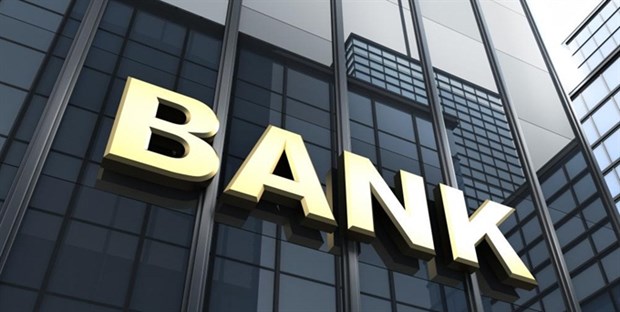New study sheds light on bank performance
The process of restructuring commercial banks in Vietnam mostly focusses on mitigating negative effects and not on promoting positive factors, one of which is the increase in private ownership.
 Illustrative image (Photo: saga.vn)
Illustrative image (Photo: saga.vn)Hanoi (VNA) – The process of restructuring commercial banks in Vietnam mostly focusses on mitigating negative effects and not on promoting positive factors, one of which is the increase in private ownership.
Nguyen Hong Son, rector of the Vietnam National University’s School of Economics and Business, made the remark in his group’s recent working paper which shows the results of an empirical test to study the relation between the ownership structure and bank performance, using data collected from 44 banks in the Vietnamese banking system from 2010 to 2012.
The study finds that in their models measuring banks’ Return on Asset (ROA) and Return on Equity (ROE), the non-performing loan ratio has the opposite impact on the banks’ ability to earn profits while the percentage of private ownership presents a positive relationship with profitability.
Therefore, the researchers recommended that the percentage of private equity in banks should be increased, even in the State-owned commercial banks, such as the Bank for Investment and Development of Vietnam (BIDV) and the Joint Stock Commercial Bank for Foreign Trade of Vietnam (Vietcombank).
The equitisation of Vietnamese commercial banks is not a new story but the research by Son and his group has raised another point of view relating to the State ownership of large State-owned commercial banks.
Dao Van Hung, a member of the National Financial and Monetary Policy Advisory Council, said though there was a strong decrease in the rate of State ownership in State-owned commercial banks over the past 20 years, from 85 percent in 1993 to 47 percent in mid-2015, the rate was still higher than the world’s average level which already reached 15 percent in 2010.
As of February 29, this year, charter capital of all credit institutions totals 460.9 trillion VND (20.9 billion USD). Of the sum, the State-owned commercial banks hold 137 trillion VND (6.2 billion USD) and the group of private banks 194 trillion VND (8.8 billion USD).
The State Bank of Vietnam’s rate of ownership in the Vietnam Joint Stock Commercial Bank for Industry and Trade (Vietinbank) is 64.5 percent, the Joint Stock Commercial Bank for Foreign Trade of Vietnam (Vietcombank) 77 percent, the Bank for Investment and Development of Vietnam (BIDV) 95.3 percent, and the Vietnam Bank for Agriculture and Rural Development (Agribank) 100 percent.
The SBV also holds 100 percent of charter capital of three One Member Limited Liability banks including the Ocean Bank, the Global Petroleum Bank (GPBank) and the Construction Bank (CBBank).
Currently, the Government’s Resolution 15/NQ-CP allows the SBV to hold at least 65 percent of charter capital in joint stock commercial banks except Vietinbank.
Waste of resources
Hung who is also the director of the Ministry of Planning and Investment’s Institute of Policy and Development said that the four State-owned commercial banks [Agribank, Vietinbank, Vietcombank and BIDV] were all multifunctional banks of which roles, missions and targets are similar, providing similar services.
Thus the existence of the group of four would lead to a waste of resources and made it difficult to create a regional-scale bank, he said.
Nguyen Dinh Cung, Director of the Central Institute of Economic Management (CIEM), said the private sector had become a major driving force of the economy’s growth and was believed to be able to promote their roles in many industries that the State was handling.
Therefore, with limited State resources, the State should shift from being a direct investor to being a supporter of the market economy development. The State’s intervention was only to fix the market’s failures, Cung said.
Hung said that in the long run the State should drastically apply market principles in developing the financial market and speed up the equitisation of the banking sector.
Banking is also a kind of business. If the State has sold their shares in many production and services enterprises, there is no reason to not do the same with the commercial banks, he said.
If we could gradually reduce the State ownership in the four large commercial banks by selling its shares to foreign investors or local private institutions, the State can use the money to invest in infrastructure, education and health to meet essential demand for the socio-economic development, Hung said.
Nguyen Hong Nga, associate dean of the Economics Faculty of the Vietnam National University – HCM City’s University of Economics and Law, suggested the government treat and supervise the commercial banks as independent organisations.
He said that the SBV currently acted as a State body managing the banking system, on behalf of the Government, and at the same time was responsible for the banks’ business performance.
Therefore, reducing the State ownership ratio in State-owned banks would help partly solve the inherent conflicts and release more of the State’s limited resources which would instead be used in dealing with market failures.
Tran Thi Thanh Tu, Associate Dean of the University of Economics and Business’s Finance and Banking Faculty, said, “When equitisation is encouraged, transparency and disclose of information would be more tightly controlled and monitored as more shareholders are engaged in, thus banks will be more pressured to operate in a healthier manner and more effectively, and thereby the profitability will also be raised.”
“It is hard to say what percentage of State ownership is optimal for the Vietnamese commercial banks.”
“The figure might depend on each phase of the economy’s development as well as the maturity of the country’s banking system.
“However, we still recommend that participation of the private sector in banks should be encouraged to increase the profitability. Increasing the ratio of private ownership in commercial banks is a common trend of developing countries,” Tu said.
Banks’ will
Not only experts but bank leaders also see the importance of calling for more private investment in the banking sector.
A leader of Vietcombank once proposed to the Government to have a roadmap to reduce the ownership in State-owned banks to 51 percent to create favourable conditions for the process of credit institution restructuring.
He said that the Government should focus on building one or two regional-scale commercial banks which would be the backbone of the whole system, facilitate the banks to do M&A activities and increase charter capital.
A member of BIDV’s Board of Directors also said to the press that it was not necessary for the State ownership to be maintained at that high level [65 percent]. He said that 51 per cent was enough.
According to the National Financial Supervisory Commission, by the end of 2015, Vietnam’s credit institution system includes seven State-owned commercial banks, 28 privately owned joint stock commercial banks, 55 joint venture and wholly foreign invested banks.-VNA












